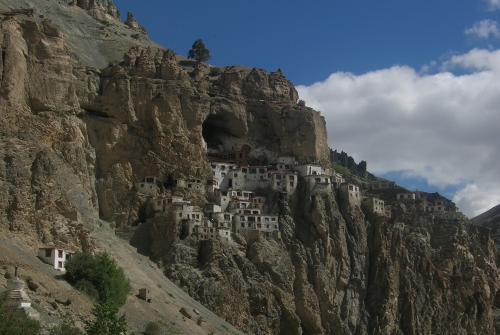The monastery photo from yesterday’s blog post on Bhutan made me think back on my trip through Ladakh, India a couple of years ago. I went with a friend who was involved with Himalayan Health Exchange, a health care service program that works in medically under-served Himalayan communities. I was so moved by the architecture in Ladakh—it felt so organic, in harmony with the landscape. Here’s a couple photos from that trip and some journal scribbling. 
Behind the main range of the Himalaya in northwest India, secluded in the south of Ladakh, the mountains of Zangskar rest on a morning blue backdrop. I’m walking through a wide river valley with massive dry, brown peaks calling my attention. The open sky and jagged rock mountains fit together perfectly. When will I be perfect? The architecture of Zangskar also fits. You the sense that these villages weren’t built—they were grown. Zangskaris are subsistence farmers, with settlement locations dictated by the environment. Apparently population growth is monitored, because the land can only support so many. The monasteries of Zangskar collaborate with landscape in a different way. Placed on hilltops, sometimes in caves, they’re situated away from more hospitable land. Maybe seclusion is necessary for meditation? And yet, they also feel organic, not superimposed on the landscape; they emerge from the rock.

How is this precision possible in so much open space? Gumbaranjan’s folds and faults, the valley wrapping around to the 5080m Shingo La pass ahead: this landscape makes me think about the awful gap between what I am and what I want to be. Pilgrimage through the Zangskar mountains and valleys may call attention to the sky, but to experience that openness one must stay focused on a single point. It’s these ragged mountains that define the space around me. It feels like enlightenment might be right around the corner…
Thank you for subscribing to Tricycle! As a nonprofit, we depend on readers like you to keep Buddhist teachings and practices widely available.